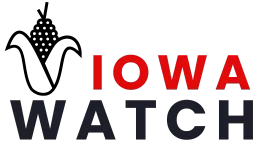If you’re a business owner or financial decision-maker in Iowa, you’ve likely heard about ASC 842 by now. The new lease accounting standard has shaken up how companies manage their financial statements, especially when it comes to leasing equipment, real estate, or even transportation assets.
And if you’re in sectors like agriculture or manufacturing—key industries in Iowa—this could directly impact how you decide between leasing or buying.
Let’s dive into what ASC 842 really means for you, and more importantly, how it might reshape the way you think about leases versus buying.
Table of Contents
ToggleThe ASC 842 Shift & What’s Different Now
Remember when you could lease assets for your business without having to worry about them showing up as liabilities on your balance sheet? Yeah, those days are pretty much over.
ASC 842 requires nearly all leases lasting over 12 months to be recognized on the balance sheet. That means you now have to report operating leases that used to be off the books as actual liabilities and assets.
For businesses in Iowa that lease everything from heavy farm equipment to office space, this change doesn’t just tweak a few numbers. It changes the entire financial picture.
Before, you could lease a combined harvester or a factory floor, and none of that would impact your debt-to-equity ratio.
Now, all that leased equipment will appear as a liability. Suddenly, the decision to lease isn’t just about preserving cash flow; it’s about how those liabilities will affect your credit, borrowing capacity, and even relationships with lenders.
To help businesses manage the new reporting requirements under ASC 842, LeaseQuery software offers a streamlined solution that ensures accurate and compliant lease accounting.
Financial Ratios and Covenants
One of the first things you’ll notice under ASC 842 is how it impacts your financial ratios. Iowa businesses, particularly in agriculture and manufacturing, tend to be capital-intensive. The moment you recognize your lease obligations on the balance sheet, your debt-to-equity ratio could go up.
This might not seem like a big deal at first glance, but lenders and investors keep a close eye on that ratio.
A higher debt-to-equity ratio could raise red flags, lead to higher borrowing costs, or even trigger breaches in financial covenants—especially for businesses that already operate on thin margins, like many farms or small manufacturing operations in Iowa.
If your business has existing loan agreements with covenants that limit liabilities, ASC 842 could put you in a tight spot. Suddenly, the way you’ve always managed leases isn’t working as well under the new accounting rules.
Lease vs. Buy Analysis

The decision to lease or buy has always involved some math. But with ASC 842, the equation has changed a bit.
In the past, leasing was often more attractive because it helped conserve capital. You didn’t need to make a big upfront investment, and you could spread out payments over time.
But now that those lease obligations show up as liabilities on your balance sheet, you have to weigh those benefits against the impact on your financials.
So how do you break it down? The key is to calculate the net present value (NPV) of leasing versus buying. Here’s the basic idea:
- Leasing: You calculate the NPV of your lease payments, discounting them using the implicit rate in the lease or your company’s incremental borrowing rate.
- Buying: For purchasing, you’d look at the upfront cost, maintenance expenses, and any potential salvage value at the end of the asset’s life.
In many cases, if the NPV of leasing comes out lower, leasing could still be your best option—especially if you need flexibility. But if buying turns out to be cheaper in the long run, it might be time to reconsider.
Tax Benefits
One thing that might sway your decision is taxes. Buying an asset allows you to take depreciation tax deductions over time, which could lower your taxable income.
This is particularly useful in Iowa’s agricultural sector, where equipment like tractors or combines have long useful lives and can be written off over several years.
Leasing, on the other hand, may allow you to deduct lease payments, depending on the structure of the lease and relevant tax laws. Iowa businesses should also keep IRS Section 179 in mind, which lets you deduct the full purchase price of certain assets in the year they are acquired.
That can be a game-changer for small-to-mid-sized businesses, making buying much more attractive than leasing in some cases.
Why Lease in the First Place?

Let’s not forget why so many businesses, especially in Iowa, lease instead of buy. It comes down to conserving cash flow.
Leasing typically requires less upfront capital, which can be a lifesaver for smaller businesses.
If you’re running a farm or a small manufacturing operation, you may not have the liquidity to buy a new piece of machinery outright. Leasing lets you preserve that capital for other operational needs.
But here’s where ASC 842 comes into play again: now that those lease obligations must be reported on your balance sheet, some of the traditional cash flow advantages of leasing might not look quite as appealing.
You’ll need to weigh the immediate benefits of leasing against the long-term financial implications under the new rules.
The Flexibility Factor
Another reason businesses opt to lease is flexibility—especially when it comes to fast-changing industries or technologies.
In Iowa, this might apply to companies in manufacturing or technology sectors, where equipment can become obsolete quickly. Leasing gives you the ability to upgrade without being tied down to outdated gear.
On the flip side, for assets with long useful lives, like farm machinery or factory equipment, buying might make more sense. You can avoid the recurring costs of lease payments and take advantage of the tax benefits of ownership.
Plus, there’s the peace of mind that comes with owning an asset outright, without having to worry about returning it or negotiating a new lease when the current one expires.
Strategic Alignment

It’s not just about the numbers. When deciding whether to lease or buy, Iowa businesses also need to think strategically. What are your long-term goals? How does this decision fit into your overall business plan?
If your industry is one where flexibility is key, leasing might be the better option. Think of sectors where technology is rapidly evolving, or where demand fluctuates seasonally. Leasing can give you the wiggle room to adapt as needed.
On the other hand, if you’re in an industry like agriculture, where stability and long-term assets are crucial, buying might align better with your operational goals.
Special Considerations for Iowa Businesses
Let’s face it: Iowa has its own set of challenges when it comes to lease-versus-buy decisions. The state’s economy is heavily reliant on agriculture, manufacturing, and logistics, all of which involve substantial leasing of equipment, land, or real estate.
For farmers leasing large tracts of land or expensive machinery, ASC 842 means those leases will now affect their financial statements directly.
Similarly, small-to-medium-sized manufacturers, who often lease factory space or specialized equipment, might see their financial ratios take a hit.
On the bright side, there are incentives like IRS Section 179, which can tip the scales in favor of buying. Iowa businesses, particularly in agriculture, should also explore state-level incentives for equipment purchases that could make ownership more attractive.
Lease or Buy?

So, where does all this leave you? ASC 842 has certainly changed the game, but the decision to lease or buy still depends on a mix of financial analysis and strategic considerations.
Leasing may still make sense for businesses that need flexibility while buying might be more beneficial for those that require long-term stability and can take advantage of tax incentives. The key is to balance your immediate financial needs with your broader business goals.
Iowa’s unique economic landscape means businesses here have to be especially thoughtful about how they approach these decisions.
With the new standards in place, there’s no one-size-fits-all answer, but by crunching the numbers and keeping an eye on the bigger picture, you can make the best decision for your business moving forward.















